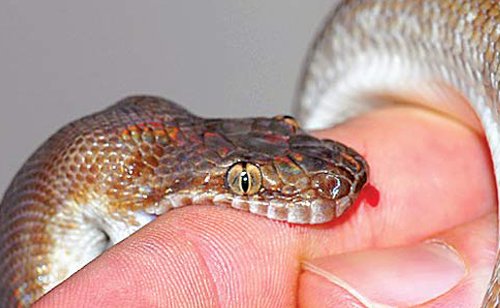
A snakebite is an injury caused by the bite of a snake, especially a venomous snake.A common sign of a bite from a venomous snake is the presence of two puncture wounds from the animal’s fangs.Sometimes venom injection from the bite may occur.This may result in redness, swelling, and severe pain at the area, which may take up to an hour to appear.Vomiting, blurred vision, tingling of the limbs, and sweating may result.Most bites are on the hands, arms, or legs.Fear following a bite is common with symptoms of a racing heart and feeling faint.The venom may cause bleeding, kidney failure, a severe allergic reaction, tissue death around the bite, or breathing problems.Bites may result in the loss of a limb or other chronic problems.The outcome depends on the type of snake, the area of the body bitten, the amount of venom injected, and the general health of the person bitten.Problems are often more severe in children than adults, due to their smaller size.
Signs and symptoms
The most common symptom of all snakebites is overwhelming fear, which contributes to other symptoms, including nausea and vomiting, diarrhea, vertigo, fainting, tachycardia, and cold, clammy skin. Television, literature, and folklore are in part responsible for the hype surrounding snakebites, and people may have unwarranted thoughts of imminent death.
First aid
Snakebite first aid recommendations vary, in part because different snakes have different types of venom. Some have little local effect, but life-threatening systemic effects, in which case containing the venom in the region of the bite by pressure immobilization is desirable. Other venoms instigate localized tissue damage around the bitten area, and immobilization may increase the severity of the damage in this area, but also reduce the total area affected; whether this trade-off is desirable remains a point of controversy. Because snakes vary from one country to another, first aid methods also vary.

